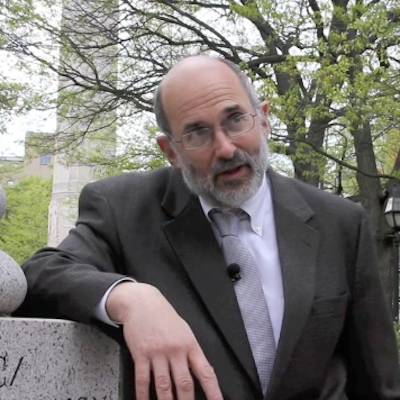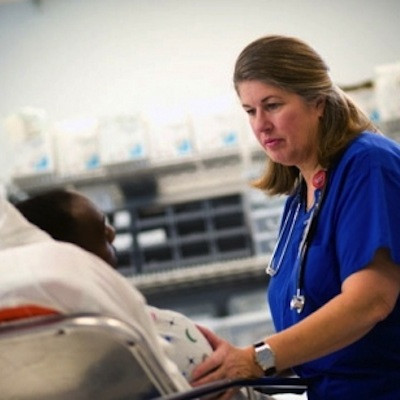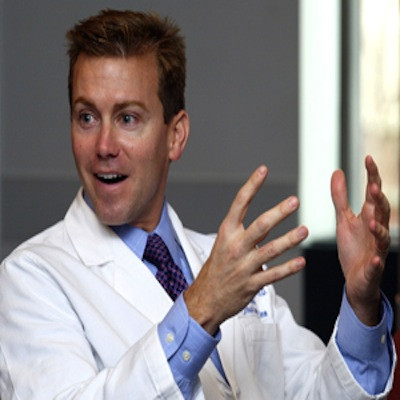Horowitz: Obamacare - Here to Stay and on the Right Track
Tuesday, April 22, 2014
This past Thursday morning, there was an unusual substitute for press secretary Jay Carney at the daily White House news briefing—the President himself. President Obama took the podium to highlight the fact that sign-ups on health exchanges for Obamacare ended up exceeding 8 million, more than a million over the well- publicized 7 million CBO estimate and far beyond the predictions of various Republican and Conservative premature gravediggers.
The success of this first period of open enrollment, which ended April 1, came despite the initial serious difficulties with the website and aggressive and well-funded efforts to dissuade people from signing up. According to the White House, other features of the Affordable Care Act have resulted in health care coverage for an additional 6 million people and counting: 3 million young adults who can now stay on their parents' plan until they are 26; and 3 million more people enrolled in Medicaid and the Children’s Health Insurance Program (CHIP). Since one can enroll at any point during the year for these programs, the numbers will continue to increase.
Further, 28% of the people who purchased private insurance through the exchanges are between the ages of 18 and 34. This is substantially lower than their 40% share of the population, but in line with insurance company estimates and comparable to the first year of the successful Massachusetts program. Boding well for keeping down increases in premiums in future years, 5 million more people are now enrolled in plans that meet Affordable Care Act standards outside the exchanges. By the requirements of the new law, this additional pool of people must be factored in when insurance companies set premiums for next year..
GET THE LATEST BREAKING NEWS HERE -- SIGN UP FOR GOLOCAL FREE DAILY EBLASTThe Congressional Budget Office (CBO) now estimates that twelve million more people will have health insurance in 2014 due to the new law. This is a factual rejoinder to the repeated arguments by conservatives that the number of net new people insured was going to be slight or non-existent due to people losing their existing insurance policies because they did not meet the requirements of the Affordable Care Act.
It will take a while for public opinion to catch up with Obamacare’s success. While there has been a significant improvement in approval for the law since its low water mark just after the disastrous role out of the federal website, it remains unpopular. And it is particularly unpopular with the older and white voters that make up a disproportionate share of the electorate in Congressional mid-term elections.
The long-term picture, however, looks quite favorable. As with any comprehensive reform, tweaks and changes are needed. But over-all, it is working as envisioned, providing access to quality health care to many more Americans and assisting in putting the breaks on health care costs. It is a consequential accomplishment—one worth all the extensive political capital the President has spent and continues to spend on it.
Rob Horowitz is a strategic and communications consultant who provides general consulting, public relations, direct mail services and polling for national and state issue organizations, various non-profits and elected officials and candidates. He is an Adjunct Professor of Political Science at the University of Rhode Island.
Related Slideshow: Preventable Deaths in American Hospitals
Related Articles
- Rob Horowitz: ‘Fiscal Cliff’ Notes
- Rob Horowitz: At Last: A National Budget Agreement
- Rob Horowitz: Chris Christie’s Big Moment Is Coming Soon
- Rob Horowitz: Colorado By Itself Won’t Lead to Sensible Gun Control
- Rob Horowitz: Gemma’s Hail Mary
- Rob Horowitz: How The Boston Marathon Tragedy Brings Us Together
- Rob Horowitz: Kennedy: A Vision of What We Can Do Together
- Rob Horowitz: Millennials Coming of Age
- Rob Horowitz: Newt Bucks the Conservative Tide On Immigration
- Rob Horowitz: Obama Moves into High Gear on Climate Change
- Rob Horowitz: Occupy Wall Street Should Look to MLK
- Rob Horowitz: Progress Possible On Immigration Reform
- Rob Horowitz: Republican Orthodoxy on Marriage Equality Cracking
- Rob Horowitz: Romney’s Ill-Timed Foreign Policy Punch
- Rob Horowitz: State of the Union: Obama’s Chance to Set the Agenda
- Rob Horowitz: The Paul Ryan Selection
- Rob Horowitz: Time to Take Action on Climate Change
- Rob Horowitz: 5 More Reasons for New Year’s Optimism
- Rob Horowitz: Bob Woodward Goes Off the Rails
- Rob Horowitz: Chuck Hagel is an Excellent Choice for Secretary of Defense
- Rob Horowitz: Comprehensive Immigration Reform Is Back
- Rob Horowitz: Get Out the Vote
- Rob Horowitz: Imagine Democracy, Powered Digitally
- Rob Horowitz: King, Obama + Citizen Activism
- Rob Horowitz: Minimum Wage Boost Good for Rhode Island Economy
- Rob Horowitz: Newt Bucks the Conservative Tide On Immigration
- Rob Horowitz: Obama Proposes Common Sense Gun Policies
- Rob Horowitz: Pension Reform Poised for Adoption
- Rob Horowitz: Progress on Comprehensive Immigration Reform
- Rob Horowitz: Republican Presidential Nomination Contest Remains Wide Open
- Rob Horowitz: Rutgers President Ducks Responsibility On Rice
- Rob Horowitz: States Stepping Up On Climate Change
- Rob Horowitz: The Politics Rule Out Single-Payer Health Care System
- Rob Horowitz: Tough Fight Coming On Immigration Reform
- Rob Horowitz: 5 Reasons for New Year’s Day Optimism
- Rob Horowitz: Brewer Veto Cripples Effort to Roll Back Gay Rights
- Rob Horowitz: Cicilline & Doherty is a Neck-and-Neck Race
- Rob Horowitz: Congress Should Keep A Lid On Student Debt
- Rob Horowitz: Gingrich Back in Driver’s Seat
- Rob Horowitz: Immigration Reform Moves Forward
- Rob Horowitz: Latest Poll Contains Good News for Cicilline
- Rob Horowitz: Momentum Behind New Action on Climate Change
- Rob Horowitz: Newtown- One Year Later
- Rob Horowitz: Obama Puts Retiree Entitlement Programs on the Table
- Rob Horowitz: Pension Reform is a Political Winner
- Rob Horowitz: Providence Pension Deal Provides Model for All Communities
- Rob Horowitz: Rhode Island Governor Lincoln Chafee Botches Pension Issue
- Rob Horowitz: Sandy Hook Tragedy a Chance for Common Sense Gun Legislation
- Rob Horowitz: Support for Marriage Equality is Historic and Important
- Rob Horowitz: The Santorum Moment
- Rob Horowitz: Trust in Media Near an All Time Low
- Rob Horowitz: 5 Things to Watch in the Vice Presidential Debate
- Rob Horowitz: Campaign To Strangle Obamacare In Its Crib Will Fail
- Rob Horowitz: Cicilline, Obama will Win in 2012
- Rob Horowitz: DMV Improvements are a Tangible Chafee Accomplishment
- Rob Horowitz: Give Municipalities the Ability to Act on Retiree COLAs
- Rob Horowitz: Immigration Reform Moves to the Front Burner
- Rob Horowitz: Let’s Get Serious About Prescription Drug Abuse
- Rob Horowitz: Momentum Builds for Marriage Equality
- Rob Horowitz: North Providence Must Reverse New Swearing-in Policy
- Rob Horowitz: Obama Steps Up on Climate Change
- Rob Horowitz: Perry Hurt By Debate Performances
- Rob Horowitz: Public Employee Unions Losing Pension Battle
- Rob Horowitz: Rhode Island Must Upgrade Its Workforce
- Rob Horowitz: Signs of Life for Grand Bargain
- Rob Horowitz: Supreme Court Decision a Net Political Plus for Obama
- Rob Horowitz: The Ties That Bind Help Us Weather the Storm
- Rob Horowitz: Universal Background Checks Gain Traction
- Rob Horowitz: A College Degree Is More Important than Ever
- Rob Horowitz: Chafee Does the Right Thing on In-State Tuition
- Rob Horowitz: Civility Needed in Cranston
- Rob Horowitz: Election Gives President Obama More Leverage on Fiscal Cliff
- Rob Horowitz: Government Shutdown A Disaster for House Republicans
- Rob Horowitz: Important Climate Change Milestone Exceeded
- Rob Horowitz: Let’s Celebrate RI’s Adoption of Marriage Equality
- Rob Horowitz: National Attention to Obesity Starting to Pay Off
- Rob Horowitz: Obama Administration Launches Promising Climate Change Initiative
- Rob Horowitz: Obama Still the Favorite in November
- Rob Horowitz: Potential New Life for Campaign Finance Reform
- Rob Horowitz: RI Leads the Way on Pension Reform
- Rob Horowitz: Rhode Island’s Self-Esteem Campaign Needs More Money
- Rob Horowitz: Social Media Becoming a Force in Politics
- Rob Horowitz: Supreme Court Fuels National Push for Gay Marriage
- Rob Horowitz: The Ultimate City: Bohemians, Gays & Jobs
- Rob Horowitz: WA Bridge Collapse A Wake-Up Call For Rhode Island
- Horowitz: New Generation of Latinos Fit Familiar Immigrant Pattern
- Rob Horowitz: A Teaching Lesson at Brown
- Rob Horowitz: Chafee Package Can Save Cities and Towns
- Rob Horowitz: Climate Change Adaptation Moves on to the Public Agenda
- Rob Horowitz: End Legal Loan-Sharking Now
- Rob Horowitz: HBO’s Game Change Reignites Palin Controversy
- Rob Horowitz: Important Lessons for Occupy Movement
- Rob Horowitz: Making College Affordable Must Be High Priority
- Rob Horowitz: New Media Trends Accelerate
- Rob Horowitz: Obama Jobs Speech Resets the Table
- Rob Horowitz: Obama Uses Bully Pulpit to Take on Rising College Costs
- Rob Horowitz: President Hillary Clinton? Not So Fast
- Rob Horowitz: RI’s Congressional Delegation—Afraid of the Elderly
- Rob Horowitz: Romney Aide’s Resignation Highlights Importance of Marriage Equality Fight
- Rob Horowitz: Social Media: Key Component of the ‘New’ News Media











